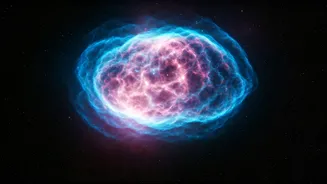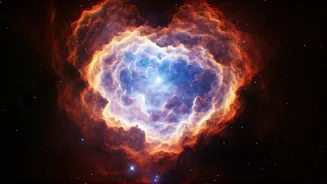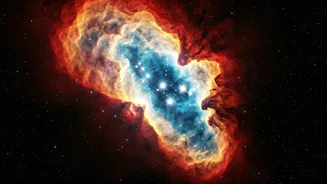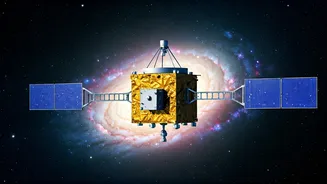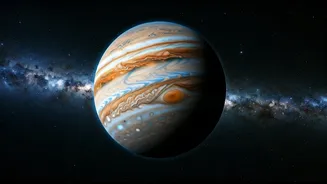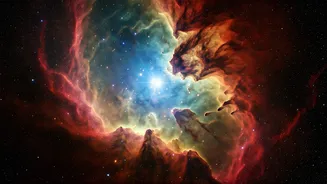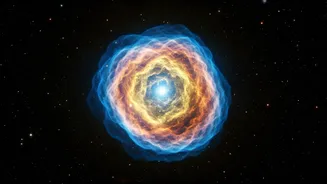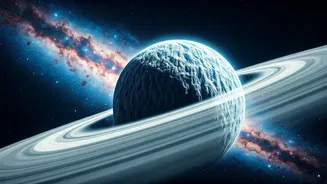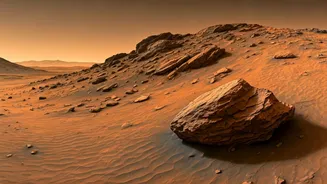Distant Galaxies Unveiled
NASA's latest collection includes stunning images of distant galaxies, offering a window into the universe's past. These galaxies, billions of light-years
away, reveal the early stages of cosmic evolution. Each image is a testament to the power of modern telescopes, allowing us to see these galaxies in unprecedented detail. Scientists study these images to understand how galaxies form, evolve, and interact. The colors, shapes, and structures provide clues about the composition and processes occurring within these celestial systems. Through this data, researchers can refine their models of the universe and gain a deeper understanding of its history and future. The images often show intricate details such as spiral arms, dust lanes, and the bright glow of young stars, all contributing to the beauty and intrigue of these faraway galaxies.
Earth's Beauty Captured
The collection also features remarkable images of Earth, showcasing our planet's diverse landscapes and dynamic atmosphere. These images provide invaluable data for monitoring climate change, tracking weather patterns, and studying environmental changes. Satellites and space-based instruments capture the Earth from unique angles, revealing the beauty and complexity of our world. The images often highlight different geographical features, such as mountains, oceans, and forests, as well as atmospheric phenomena like cloud formations and storms. Scientists use this visual data to understand various aspects of our planet, from monitoring deforestation to predicting natural disasters. Each image serves as a reminder of the fragility and wonder of our home. This imagery helps to raise public awareness about our planet and inspire action to protect it for future generations.
Nebulae: Cosmic Artworks
The new images showcase stunning views of nebulae, vast clouds of gas and dust where stars are born. These nebulae are often illuminated by the intense radiation from young, hot stars, creating colorful and intricate patterns. The images reveal the delicate beauty and dynamic nature of these cosmic nurseries. The colors in these nebulae are produced by the different elements present, such as hydrogen, oxygen, and sulfur, which emit light at specific wavelengths. The details of these images allow astronomers to study the process of star formation, understanding how stars are born, evolve, and eventually die. The complexity and vibrancy of nebulae make them a captivating subject for both scientists and the general public, providing a sense of the scale and grandeur of the universe. Studying nebulae helps researchers understand how stars, planets, and even elements are created.
Stellar Clusters Revealed
NASA's latest collection includes images of stellar clusters, groups of stars that were born together. These clusters provide essential insights into star formation and stellar evolution. Scientists study these clusters to understand how stars of different masses evolve, interact, and eventually end their lives. The images reveal the variety within these clusters, from young, bright stars to older, fainter ones. Examining the characteristics of these stars—their colors, brightnesses, and movements—helps astronomers learn about their ages, compositions, and origins. The study of star clusters helps to refine our understanding of the universe's cosmic cycles. These observations allow for improved models of stellar evolution and provide data to understand the lifecycle of the stars within our galaxy and beyond.
Planetary Views Explored
The new image set provides a unique look at various planets within our solar system. NASA's missions constantly provide scientists with imagery that allows for deeper analysis of these worlds. Detailed images of planets like Mars, Jupiter, and Saturn reveal their geological features, atmospheres, and unique characteristics. These observations provide insight into the potential for past or present life, and the physical characteristics of other planets in our solar system. This information also provides a sense of what conditions are needed for life and how different planets are formed and altered. Through these images, scientists can better understand the diversity of the solar system and how each planet has evolved over billions of years, providing a better understanding of how the Earth came to be.
